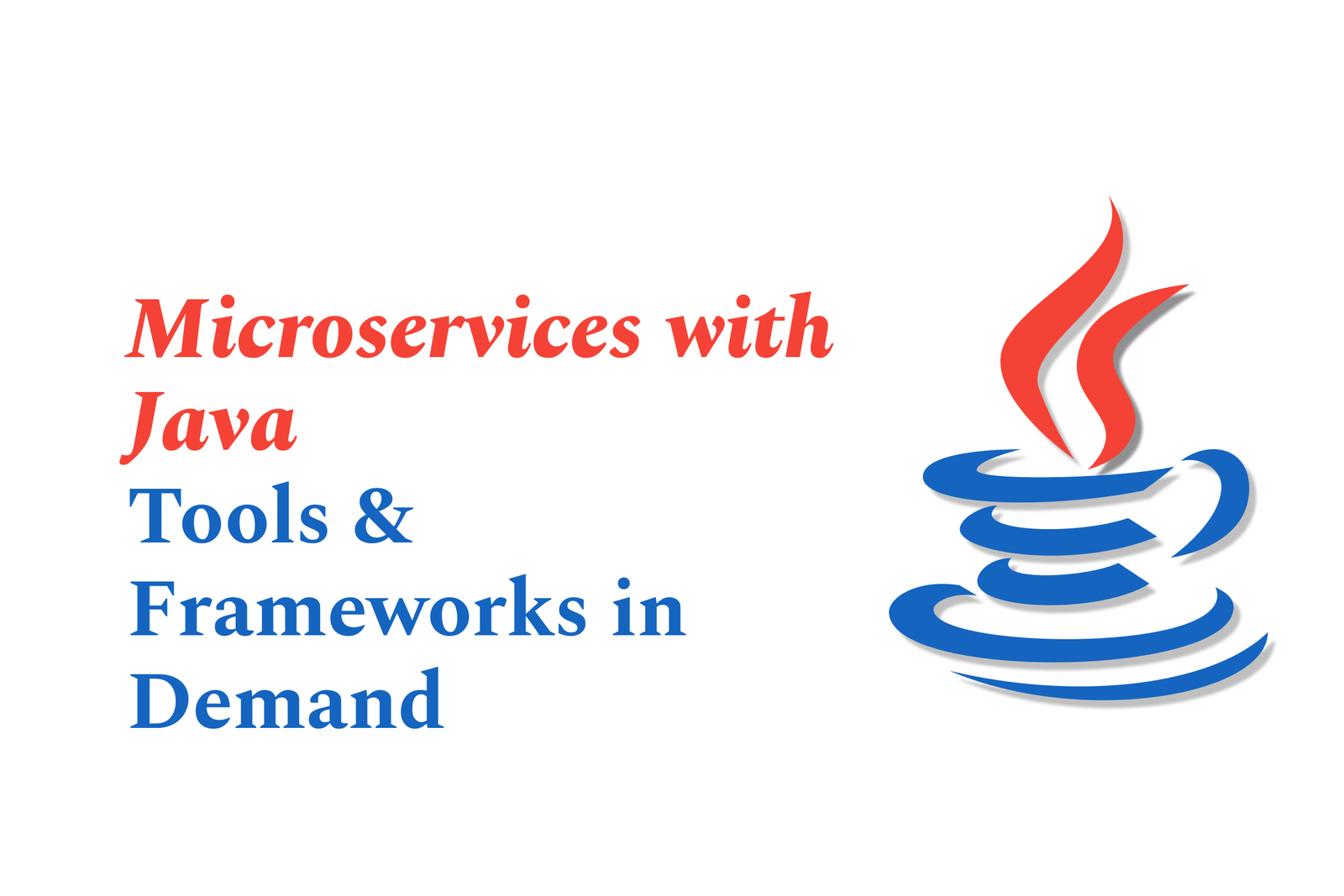Microservices with Java: Tools & Frameworks in Demand
Microservices with Java involves building scalable, modular applications using lightweight, independent services. Popular tools and frameworks in demand include Spring Boot and Spring Cloud, enabling rapid development, service discovery, and robust cloud-native microservice architectures.
Microservices with Java: Tools & Frameworks in Demand
1 ) Understanding Microservices Architecture
Microservices architecture is a software development style that structures an application as a collection of small, autonomous, loosely coupled services. Each service is independently deployable and typically organized around business capabilities. This architecture enhances modularity, scalability, and agility, allowing small teams to own and manage individual services effectively.
2 ) Key Characteristics of Microservices
Componentization via Services: Dividing functionality into discrete services.
Organized Around Business Capabilities: Services correspond to specific business functions.
Independent Deployment: Each microservice can be updated and deployed without affecting the whole system.
Decentralized Data Management: Each service manages its own data, avoiding central databases.
Technology Diversity: Services can use different languages, frameworks, and data stores best suited to their needs.
Design for Failure and Evolutionary Design: Systems are designed to handle failures gracefully and evolve over time.
3 ) Benefits and Challenges
Benefits: Improved scalability, agility, resilience, and the ability to use diverse technologies.
Challenges: Increased complexity in distributed communication, eventual consistency, operational overhead, and the need for mature DevOps practices.
4 ) Java and Microservices
Java, particularly with frameworks like Spring Boot and Spring Cloud, remains a dominant platform for building microservices. Its extensive ecosystem, community support, and well maintained tools make Java a preferred choice among enterprises for developing and deploying microservices efficiently.
5 ) Popular Java Tools & Frameworks for Microservices
Spring Boot: Simplifies microservice development with rapid setup and minimal configuration. It allows developers to build standalone, production grade services easily.
Spring Cloud: Provides tools for service discovery, configuration management, circuit breakers, and distributed tracing—key for managing microservice architectures.
Java IDEs: Key Integrated Development Environments (IDEs) like Eclipse, NetBeans, IntelliJ IDEA, and Visual Studio Code support Java microservice development with rich plugins and debugging tools.
Application Servers: Lightweight servers like Apache Tomcat and more complex ones like IBM WebSphere cater to varied deployment needs.
6 ) Supporting Technologies
Container Orchestration: Kubernetes enables deployment, scaling, and management of containerized microservices.
API Gateways: Manage, secure, and route traffic between clients and microservices.
DevOps & Observability: Continuous integration and delivery pipelines, along with monitoring tools, support fast, reliable microservices deployment.
7 ) Industry Usage and Adoption
Microservices are widely adopted across sectors such as e commerce, streaming services, and financial services to increase flexibility, scale efficiently, and innovate rapidly by decoupling complex applications into manageable services.
8 ) Conclusion
Microservices offer significant advantages for building scalable and maintainable applications in modern cloud environments. Java remains a strong contender in this space due to its mature ecosystem and toolsets. Selecting the right frameworks and tools, alongside a deep understanding of the architectural principles, is critical for successful microservice implementations.
https://justacademy.in/news-detail/how-flutter-is-dominating-cross-platform-app-development
https://justacademy.in/news-detail/react-native's-latest-improvements-to-battery-efficiency
https://justacademy.in/news-detail/react-native-expo-sdk:-what?s-coming-next?
https://justacademy.in/news-detail/android-instant-apps-developments
https://justacademy.in/news-detail/why-swiftui-is-the-future-of-ios-development
Related Posts
Java supports GDPR and data privacy by enabling secure data handling through encryption, controlled access, and precise data management. It allows developers to minimize PII exposure, ensure data confidentiality, and design workflows that comply with data protection regulations effectively.
Java code quality tools have evolved to include advanced static analysis, integrated security checks, and AI-powered code reviews. These updates help developers detect bugs, enforce coding standards, and enhance security, streamlining the development process and improving overall code reliability.
Java remains a cornerstone in big tech companies, evolving with modern features like records, pattern matching, and virtual threads. Its robust ecosystem, enhanced performance, and growing AI integrations keep it vital for both legacy systems and innovative new projects.
Java and CI/CD pipeline optimizations streamline Java application development by automating builds, tests, and deployments. They improve efficiency through parallelization, caching, and secure secrets management, enabling faster feedback loops and more reliable, scalable software delivery.
Java supports modern cryptography standards through its flexible Java Cryptography Architecture (JCA), enabling integration of advanced algorithms like AES, EdDSA, and post-quantum tools. Libraries like Bouncy Castle offer FIPS-certified, hardware-accelerated implementations for secure development.
Java 23 enhances record patterns by enabling concise, direct destructuring of record components within pattern matching, simplifying type checks and data extraction. This improvement boosts code readability and expressiveness by reducing boilerplate in handling immutable data classes.
Java remains a top choice for mobile app backends, powering scalable, secure, and high-performance server-side solutions. Latest trends include cloud-native microservices, reactive programming, and enhanced JVM optimizations, enabling efficient, flexible, and robust mobile backend development.
Java SE 24 and LTS Java SE 21 offer enhanced features and performance, while Apache Spark 4.0.0 introduces Scala 2.13 support and advanced ML and SQL capabilities. Together, they empower developers to build scalable, high-performance data applications with modern tools.
JUnit 5 modernizes Java testing with a modular architecture, improved assertions, and seamless Java 8+ support. Beyond JUnit, tools like Mockito and AssertJ enhance mocking and assertions, creating a powerful, flexible ecosystem for writing clean, efficient Java unit tests.
Java plays a pivotal role in cloud automation tools by providing a robust, platform-independent language used to build scalable automation frameworks like Jenkins and Selenium, enabling efficient CI/CD pipelines, testing, and orchestration across diverse cloud environments.










